The Galapagos Islands
23.05.2019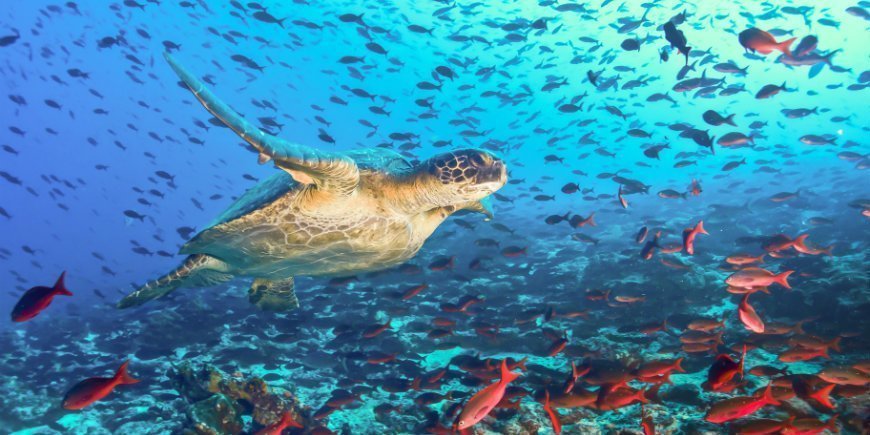
The Galapagos Islands are a magical place!
The Pacific islands are known for their stunning landscapes, unique wildlife and Darwin’s visits back in 1835.
But what makes the Galapagos Islands so special?
What is Galapagos?
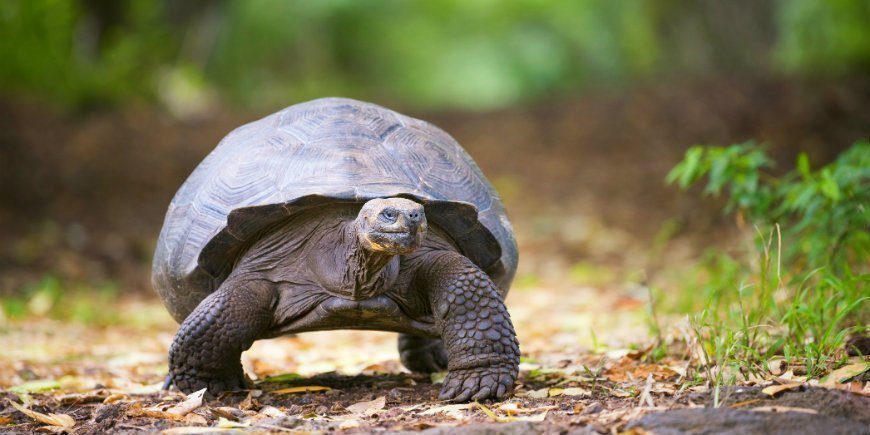
Galapagos is an archipelago in the Pacific, located around 1,000 km off the coast of Ecuador. The archipelago, which belongs to Ecuador, consists of 13 large islands and hundreds of small islands and smaller rock formations.
The name Galapagos is an old Spanish word meaning tortoise. In other words, the islands are named after the huge tortoises found there. Galapagos is also known as the Enchanted Islands.
And the islands are certainly enchanting.
Scattered across the equator, the Galapagos Islands are especially famous for their unique wildlife and breathtaking scenery – a visit here is almost like travelling to a whole new, enchanting world.
Galapagos first came under the spotlight in the 19th century when Charles Darwin used the islands as living proof of his Theory of Evolution. The archipelago was officially recognised as a national park in 1959, and in 1978 it joined UNESCO’s list of World Heritage Sites.
Galapagos’ islands
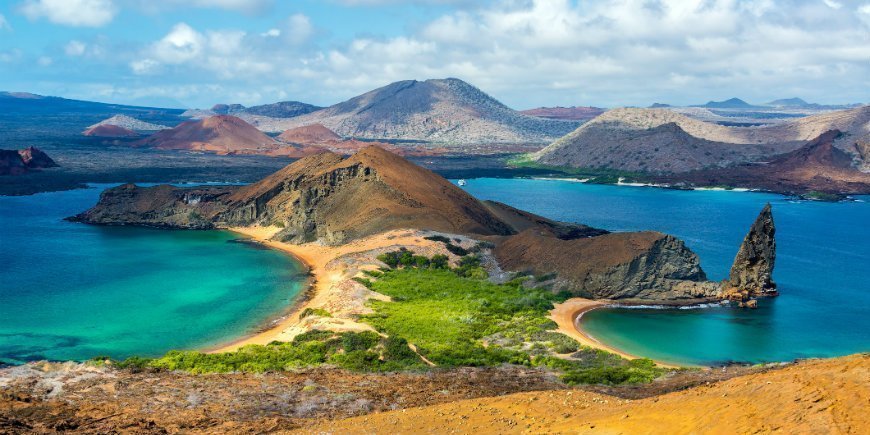
Four of Galapagos’ hundreds of islands are inhabited by people (Santa Cruz, Isabela, San Cristóbal and Floreana), and hotels and restaurants, etc., can be found here, just as in any other town or city.
Isabela and Santa Cruz are the two largest of the Galapagos Islands, and a tour to Galapagos will typically take you to them.
On Isla Isabela, which is the largest island, you can experience rugged nature. The island’s northernmost volcano, named Wolf, is Galapagos’, highest point, standing 1,707 AMSL. The island also has a large wetland area, which is a paradise for birdwatchers.
Isla Santa Cruz is situated in the middle of the archipelago, and it is the most populous of the islands. Santa Cruz also has the best infrastructure. Here, for example, you can visit the Charles Darwin Research Station, where you can see Darwin’s finches and 11 different tortoise species.
On the many uninhabited islands, nature has been left to its own devices. Here, you can experience the rugged rocky landscapes and a wealth of unique animal species. This is where you truly experience the magic of Galapagos.
It is possible to go on day trips or on a boat cruise where you sail between the various islands.
How did the islands form?
The Galapagos Islands are the result of volcanic activity that has taken place over millions of years, and the islands are, in fact the top of a volcanic chain
Geologically speaking, the Galapagos Islands are quite young, the youngest having been created less than 1 million years ago and the oldest some 3–5 million years ago.
The volcanic hotspot which created Galapagos is still very active and is estimated to have existed for more than 20 million years. However, it does not pose a danger to people travelling here.
Wildlife – the Galapagos Islands
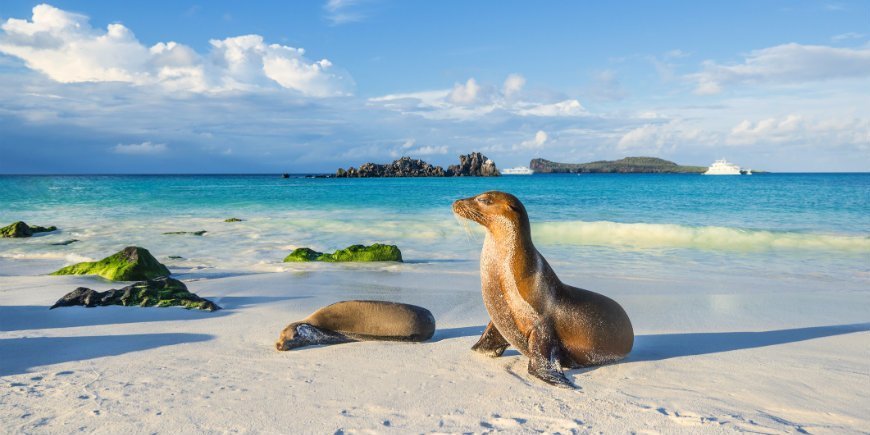
The wildlife of Galapagos is truly unique.
Many endemic species are found on the islands, i.e. animal species not found anywhere else in the world. The Galapagos tortoise, the marine iguana and the Galapagos sea lion are just a few of the islands’ endemic animal species.
It is difficult to say exactly how the animals came to be on the islands, which are located a long way from the mainland.
One theory is that the land animals, which obviously would not have been able to fly there, may have been washed away in a flood in their South American countries, and then have been incredibly fortunate to survive their trip to the islands. Over time, they have had to evolve in order to survive life on the rugged volcanic islands. They have therefore developed somewhat differently to their ancestors in their countries of origin.
This particular development can explain why many of the species on the Galapagos Islands do not exist elsewhere in the world.
The theory also explains the far higher numbers of reptiles than mammals, as these cold-blooded species would have been more likely to survive such a sea voyage.
Many of the animals on Galapagos exhibit great curiosity for people, which means that you can get right near to them and take some great close-ups.
That is well worth a long trip to experience!
What was that thing about Darwin again?
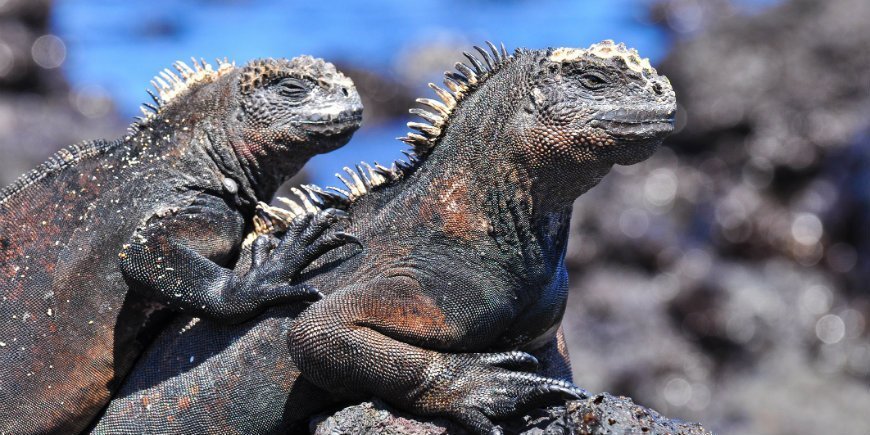
The Theory of Evolution is very much associated with Charles Darwin. And we can’t mention the wildlife of Galapagos without mentioning Charles Darwin and his Theory of Evolution.
In 1831, the young Charles Darwin embarked on a journey that would change his life as a scientist.
On the islands, Darwin discovered that the finches he knew from home looked different, and that their appearance actually changed from island to island in Galapagos. The finches’ beaks were considerably larger than those of the finches back home in Europe.
A theory began to shape, and Darwin considered whether it was possible that these finches on Galapagos and the finches back home came from the same ancestor, but had evolved gradually to adapt to the environment in which they lived. These ideas were the building blocks of Darwin’s theory regarding natural selection, and which was later used in his pioneering work The Origin of Species, which is still considered the most important contribution to the understanding of biological evolution to this day.
Would you like to experience the magical Galapagos Islands?
A tour to the Galapagos Islands is like visiting a whole different world. Be seduced by the magical atmosphere of these remote, enchanted islands.
Boredom will certainly not be a factor here!
TourCompass
-
General Info
Receive all the latest news and offers delivered to your inbox!
Registered in England.
Registered Office:
Nucleus House 2
Lower Mortlake Road
Richmond, TW9 2JA
Company no.: 11454726

E-mail: info@tourcompass.co.uk
ATOL protected no. 10558.
ABTA member no. Y6104.
Read more.